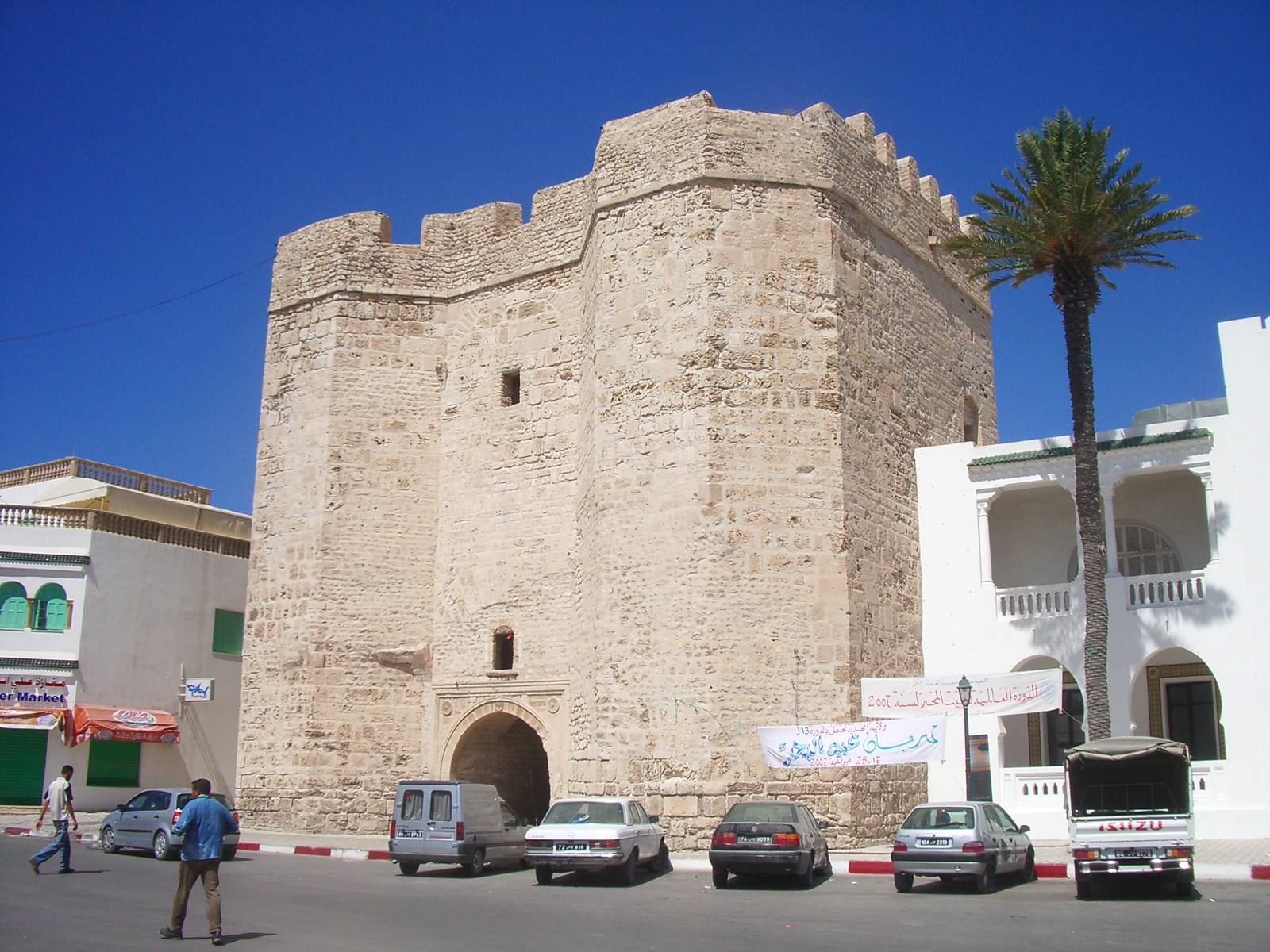|
Baghdad Manifesto
The Baghdad Manifesto was a polemical tract issued in 1011 on behalf of the Abbasid caliph al-Qadir against the rival Isma'ili Fatimid Caliphate. Background The manifesto was the result of the steady expansion of the Fatimid Caliphate since its establishment in the early 10th century, and the continued activity of the pro-Fatimid Isma'ili missionary movement (''da'wa'') across the Middle East. In 1010/11, the ''da'wa'' scored a significant success when the Shi'a Uqaylids, who ruled Mosul, Mada'in, Kufa, and other towns close to the Abbasid capital of Baghdad, publicly recognized the suzerainty of the Fatimid caliph al-Hakim by having the ''khutba'' read in his name. They were soon followed by the Banu Asad tribe, also resident in Iraq. This expansion of Fatimid influence to the very doorstep of Baghdad alarmed the Abbasid caliph al-Qadir, who launched a series of counter-moves. In the same year, he successfully forced the Uqaylid ruler Qirwash to return to recognizing Abbasid suz ... [...More Info...] [...Related Items...] OR: [Wikipedia] [Google] [Baidu] |
Abbasid Caliph
The Abbasid caliphs were the holders of the Islamic title of caliph who were members of the Abbasid dynasty, a branch of the Quraysh tribe descended from the uncle of the Islamic prophet Muhammad, Al-Abbas ibn Abd al-Muttalib. The family came to power in the Abbasid Revolution in 748–750, supplanting the Umayyad Caliphate. They were the rulers of the Abbasid Caliphate, as well as the generally recognized ecumenical heads of Islam, until the 10th century, when the Shi'a Fatimid Caliphate (established in 909) and the Caliphate of Córdoba (established in 929) challenged their primacy. The political decline of the Abbasids had begun earlier, during the Anarchy at Samarra (861–870), which accelerated the fragmentation of the Muslim world into autonomous dynasties. The caliphs lost their temporal power in 936–946, first to a series of military strongmen, and then to the Shi'a Buyid Emirs that seized control of Baghdad; the Buyids were in turn replaced by the Sunni Seljuk Turks i ... [...More Info...] [...Related Items...] OR: [Wikipedia] [Google] [Baidu] |
Qirwash
Qirwash ibn al-Muqallad ( ar, قرواش بن المقلد, Qirwāsh ibn al-Muqallad), also known by the honorific Muʿtamid al-Dawla ( ar, معتمد الدولة, lit=Trusted of the State), was the third Uqaylid emir of Mosul, and ruler of other towns in Iraq, from 1001 to 1050. An ambitious ruler, like the other petty rulers of the region he was engaged in a constant struggle of shifting alliances and enmities to keep and extend his domains. This involved his nominal overlords the Buyid emirs of Baghdad, other Bedouin tribes, local warlords and administrators, and even members of his own tribe and family who begrudged his position. In 1010, Qirwash even briefly defected from the Abbasid allegiance and recognized the Fatimid Caliphate in Cairo instead. He was eventually defeated, imprisoned and deposed by his brother, Baraka, and died on 27 October 1052. Life Clashes with the Buyids Qirwash was the oldest son of al-Muqallad ibn al-Musayyab, the Emir of Mosul, who was assassinated ... [...More Info...] [...Related Items...] OR: [Wikipedia] [Google] [Baidu] |
11th Century In The Fatimid Caliphate
11 (eleven) is the natural number following 10 and preceding 12. It is the first repdigit. In English, it is the smallest positive integer whose name has three syllables. Name "Eleven" derives from the Old English ', which is first attested in Bede's late 9th-century ''Ecclesiastical History of the English People''. It has cognates in every Germanic language (for example, German ), whose Proto-Germanic ancestor has been reconstructed as , from the prefix (adjectival " one") and suffix , of uncertain meaning. It is sometimes compared with the Lithuanian ', though ' is used as the suffix for all numbers from 11 to 19 (analogously to "-teen"). The Old English form has closer cognates in Old Frisian, Saxon, and Norse, whose ancestor has been reconstructed as . This was formerly thought to be derived from Proto-Germanic (" ten"); it is now sometimes connected with or ("left; remaining"), with the implicit meaning that "one is left" after counting to ten.''Oxford English Dict ... [...More Info...] [...Related Items...] OR: [Wikipedia] [Google] [Baidu] |
11th Century In The Abbasid Caliphate
11 (eleven) is the natural number following 10 and preceding 12. It is the first repdigit. In English, it is the smallest positive integer whose name has three syllables. Name "Eleven" derives from the Old English ', which is first attested in Bede's late 9th-century ''Ecclesiastical History of the English People''. It has cognates in every Germanic language (for example, German ), whose Proto-Germanic ancestor has been reconstructed as , from the prefix (adjectival "one") and suffix , of uncertain meaning. It is sometimes compared with the Lithuanian ', though ' is used as the suffix for all numbers from 11 to 19 (analogously to "-teen"). The Old English form has closer cognates in Old Frisian, Saxon, and Norse, whose ancestor has been reconstructed as . This was formerly thought to be derived from Proto-Germanic ("ten"); it is now sometimes connected with or ("left; remaining"), with the implicit meaning that "one is left" after counting to ten.''Oxford English Dicti ... [...More Info...] [...Related Items...] OR: [Wikipedia] [Google] [Baidu] |
1011
Year 1011 ( MXI) was a common year starting on Monday of the Julian Calendar. Events By place Europe * June 11 – Lombard Revolt: Mahmoud the Fat of Bari rises up against the Lombard rebels, led by Melus, and delivers the city to Basil Mesardonites, Byzantine governor ('' catepan'') of the Catepanate of Italy. Melus is forced to flee to Salerno, and his brother-in-law Dattus escapes to Monte Cassino, but their families are taken captive, and carted off to Constantinople. * Autumn – Basil Mesardonites visits Guaimar III of Salerno to secure his cooperation. Melus is forced to flee again. Basil proceeds to Monte Cassino – and persuades Abbot Atenulf to expel Dattus. Pope Sergius IV support Dattus with papal troops to garrison the tower on the Garigliano River, a fortified complex in the territory of the Duchy of Gaeta. * King Henry II enfeoffs Adalbero with Carinthia (including the rule over the March of Verona) after the death of Duke Conrad I * The G ... [...More Info...] [...Related Items...] OR: [Wikipedia] [Google] [Baidu] |
Akhu Muhsin
Abu'l-Husayn Muhammad ibn Ali (), better known by his nickname Akhu Muhsin (), was a 10th-century anti- Isma'ili writer. Himself of Alid descent, Akhu Muhsin lived in Damascus, and was one of the first writers interested in Alid genealogy. Based to a large degree on the previous anti-Isma'ili tract of Ibn Rizam, which now survives only in fragmentary form, he composed his own treatise against the Fatimid Caliphate and their Isma'ili adherents . It too does not survive but in fragments, incorporated in the works of the later historians al-Nuwayri, Ibn al-Dawadari, and al-Maqrizi. From the fragments, it appears that Akhu Muhsin's work contained separate parts dealing with history and doctrine. However, already al-Maqrizi condemned both Akhu Muhsin and Ibn Rizam as unreliable. Indeed, the work introduced extensive quotations from an anonymous tract, the ''Kitāb al-siyāsa'' ("Book of Methodology" or " Book of the Highest Initiation"), which purported to be an Isma'ili work descri ... [...More Info...] [...Related Items...] OR: [Wikipedia] [Google] [Baidu] |
Muhammad
Muhammad ( ar, مُحَمَّد; 570 – 8 June 632 Common Era, CE) was an Arab religious, social, and political leader and the founder of Islam. According to Muhammad in Islam, Islamic doctrine, he was a prophet Divine inspiration, divinely inspired to preach and confirm the tawhid, monotheistic teachings of Adam in Islam, Adam, Abraham in Islam, Abraham, Moses in Islam, Moses, Jesus in Islam, Jesus, and other Prophets and messengers in Islam, prophets. He is believed to be the Seal of the Prophets within Islam. Muhammad united Arabian Peninsula, Arabia into a single Muslim polity, with the Quran as well as his teachings and practices forming the basis of Islamic religious belief. Muhammad was born approximately 570CE in Mecca. He was the son of Abdullah ibn Abd al-Muttalib and Amina bint Wahb. His father Abdullah was the son of Quraysh tribal leader Abd al-Muttalib ibn Hashim, and he died a few months before Muhammad's birth. His mother Amina died when he was six, lea ... [...More Info...] [...Related Items...] OR: [Wikipedia] [Google] [Baidu] |
Ahl Al-Bayt
Ahl al-Bayt ( ar, أَهْل ٱلْبَيْت, ) refers to the family of the Islamic prophet Muhammad, but the term has also been extended in Sunni Islam to apply to all descendants of the Banu Hashim (Muhammad's clan) and even to all Muslims. In Shia Islam, the term is limited to Muhammad; his daughter Fatima, his cousin and son-in-law Ali, and their two sons, Hasan and Husayn. A common Sunni view adds Muhammad's wives to those five. While all Muslims revere the Ahl al-Bayt, it is the Shia who hold the Ahl al-Bayt in the highest esteem by regarding them as the rightful leaders of the Muslim community. The Twelver Shia also believe in the redemptive power of the pain and martyrdom endured by the Ahl al-Bayt, particularly by Husayn. Definition When ( ar, أهل, label=none) appears in construction with a person, it refers to his blood relatives but the word also acquires wider meanings with other nouns. In particular, () is translated as habitation and dwelling, and thus ... [...More Info...] [...Related Items...] OR: [Wikipedia] [Google] [Baidu] |
Fatimid Dynasty
The Fatimid dynasty () was an Isma'ili Shi'a dynasty of Arab descent that ruled an extensive empire, the Fatimid Caliphate, between 909 and 1171 CE. Claiming descent from Fatima and Ali, they also held the Isma'ili imamate, claiming to be the rightful leaders of the Muslim community. The line of Nizari Isma'ili imams, represented today by the Aga Khans, claims descent from a branch of the Fatimids. The Fatimid dynasty emerged as the leaders of the clandestine early Isma'ili missionary movement () in the ninth century CE, ostensibly acting on behalf of a hidden imam, implied at the time to be Muhammad ibn Isma'il. The Isma'ili spread widely across the Islamic world, then ruled by the Abbasid Caliphate. In 899, the future first Fatimid caliph, Abdallah, proclaimed himself to be the expected imam, causing a rift in the Isma'ili as the Qarmatians, who did not recognize his imamate, split off. In the meantime, Isma'ili agents had managed to conquer large parts of Yemen and Ifriqiya, ... [...More Info...] [...Related Items...] OR: [Wikipedia] [Google] [Baidu] |
Alids
The Alids are those who claim descent from the '' rāshidūn'' caliph and Imam ʿAlī ibn Abī Ṭālib (656–661)—cousin, son-in-law, and companion of the Islamic prophet Muhammad—through all his wives. The main branches are the (including the Ḥasanids, Ḥusaynids, and Zaynabids) and the Alawids. History Primarily Sunnī Muslims in the Arab world reserve the term ''sharīf'' or ''sherīf'' for descendants of Ḥasan ibn ʿAlī, while the term ''sayyid'' is used for descendants of Ḥasan's brother Ḥusayn ibn ʿAlī. Both Ḥasan and Ḥusayn were grandchildren of Muhammad, through the marriage of his cousin ʿAlī ibn Abī Ṭālib and his daughter Fāṭimah. Ever since the post- Hashemite era began, the term ''sayyid'' has been used to denote descendants from both Ḥasan and Ḥusayn. Arab Shīʿa Muslims use the terms ''sayyid'' and ''habib'' to denote descendants from both Ḥasan and Ḥusayn; see . Lines There are several dynasties of Alid or ... [...More Info...] [...Related Items...] OR: [Wikipedia] [Google] [Baidu] |


